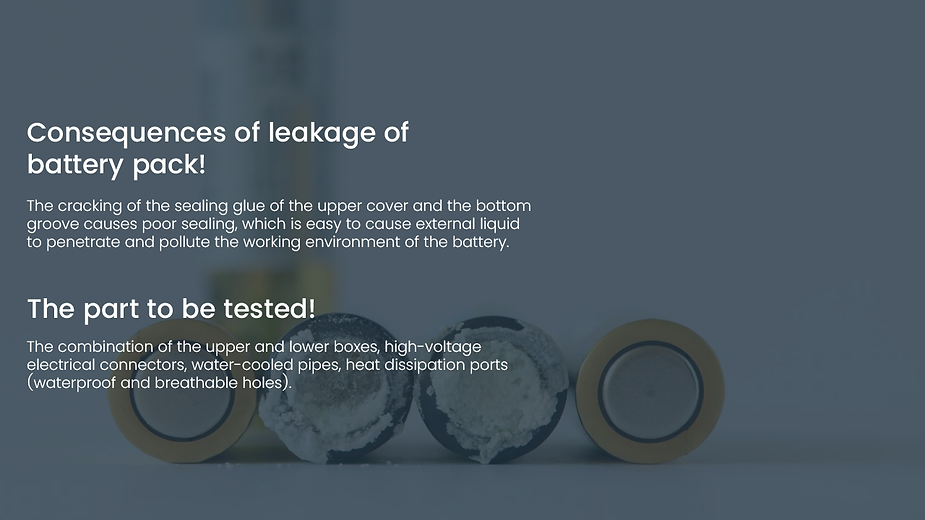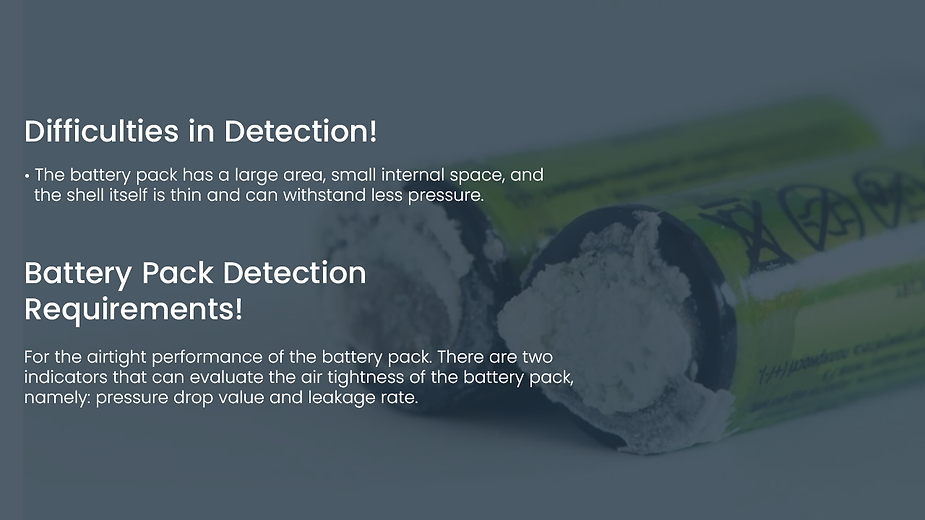In the high-stakes world of energy storage, a tiny leak can have disastrous consequences. That’s why ensuring the utmost battery air tightness testing is crucial for battery performance testing, extended lifespan, and most importantly, safety.
This article delves into the secrets of advanced air-tightness testing for batteries, exploring various air-tightness testing methods for batteries and unveiling the impact they have on your energy storage system’s overall health and reliability. Get ready to discover how proper battery sealing and air tightness can unlock the full potential of your batteries and keep your energy flowing smoothly.
Consequences of Leakage in a Battery Pack
- The cracking of the sealing glue of the upper cover and the bottom groove causes poor sealing, which is easy to causes the external liquid to penetrate and pollute the working environment of the battery.
- The leakage of the safety valve due to the sealing problem may cause damage to other parts.
- Inadequate sealing leads to acid leakage at the terminal, which affects the battery and vehicle wires and causes the circuit to burn out.
- If it is not sealed, it will lead to the loss of power capacity, a decline in battery life, and reduced safety.

Parts to Be Tested
The combination of the upper and lower boxes, high-voltage electrical connectors, water-cooled pipes, and heat dissipation ports (waterproof and breathable holes) are the key areas for battery air tightness testing.
Difficulties in Detection
A. The battery pack has a large area, small internal space, and a thin shell that can withstand less pressure.
B. The battery pack is equipped with a high-voltage connector port and a heat dissipation port, creating challenges in effective blockage during testing.

Battery Pack Detection Requirements
For the battery pack air tightness assessment, there are two indicators: pressure drop value and leakage rate. The pressure drop value represents the change in internal pressure during testing, while the leakage rate measures the rate of leakage. These factors are critical in battery quality control through air tightness testing.
According to the internal pressure of the battery pack and external atmospheric pressure, tests are divided into positive pressure and negative pressure categories.
The air leakage testing in batteries primarily uses dry compressed air to inflate (positive pressure) or deflate (negative pressure) the tested object, determining if the body is leaking. Leaks cannot be directly measured but can be inferred from changes in pressure. If the pressure inside the object drops significantly, it indicates a leak.
Conclusion
Energy storage batteries require stringent leak detection for battery performance and battery safety and air tightness testing due to potential hazards and degradation caused by leaks. Lithium-ion battery air tightness tests play a crucial role in ensuring long-term performance and durability. Preventing leaks in battery manufacturing through reliable air-tightness testing methods ensures that battery packs perform optimally, safeguarding both performance and safety.






